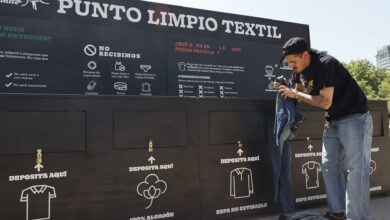Brazil’s yearly inflation doubled in 2021 to highest level in 6 years

Rio de Janeiro, Jan 11 (EFE).- Inflation in Brazil ended 2021 in double digits – at 10.06 percent – a situation not seen since 2015, when the rate climbed to 10.67 percent amid a deep economic recession.
The 2021 rate more than doubled the rate for 2020 (4.52 percent) and was well above the 3.75 percent target set by the Central Bank for the year, although the margin of tolerance had been established at 1.5 percent meaning that inflation could have risen to 5.25 percent without exceeding the target range.
The factors sending the rate up this past year were higher costs for fuel, especially gasoline, and electricity, both of which shot up due to the coronavirus pandemic and the energy crisis the country has been mired in due to the lack of rain.
Fuel costs jumped by 49.02 percent during the year, while electricity costs rose by 21.21 percent, according to the report released on Tuesday by Brazil’s Institute of Geography and Statistics (IBGE).
The steady price rises for gasoline during the year, which ended 2021 47.49 percent higher, were in part the direct consequence of the heavy devaluation the Brazilian currency suffered during the year. Although the real began sliding in value years ago it has really gone down starting in 2020 due to the effects of the Covid pandemic around the world.
The US dollar ended the year at 5.574 reais bid and 5.576 reais ask, after appreciating by 7.49 percent against the Brazilian currency in 2021, its fifth consecutive annual hike.
Regarding electricity costs, the main factor was the country’s water crisis last year. Due to the lack of rain, the reservoirs feeding the country’s main hydroelectric plants were at low levels, thus forcing the use of thermoelectric power generation to meet the public’s needs, a situation that has meant higher costs since September.
“That greatly impacted the result for electric energy, which has great weight in the index,” said Pedro Kislanov, who coordinates IBGE’s inflation statistics.
To a lesser degree, climbing food prices also added to the general price rise, mainly due to the skyrocketing price for coffee, which rose by 50.24 percent due to the fact that bean production was hit hard by freezes in the second quarter.
According to IBGE, of the nine product groups analyzed, three accounted for about 79 percent of the country’s inflation in 2021: transportation, housing and food and beverages.
In December, prices rose by 0.73 percent – with hikes in all nine groups – but they decelerated compared to November and also compared to the same month in 2020 by 1.35 percent.
Analysts estimate that inflation this year will come in at 5.03 percent, a little above the target of 3.5 percent set by the Central Bank, albeit with a 1.5 percent tolerance margin.
In an attempt to control the upward price movement in recent months, the Central Bank has been raising the basic interest rate, which closed out 2021 at 9.25 percent, its highest annual level since 2017, when it stood at 10.25 percent, after seven consecutive hikes.
Although the increase in the cost of money could aggravate the country’s current technical recession, the Central Bank has reiterated that its aim is to continue raising rates until the brakes can be put on rising inflation. Economists forecast that Brazil will end 2022 with its basic interest rate at 11.75 percent.
The gross domestic product of Latin America’s largest economy slipped by 0.1 percent in the third quarter compared to the prior quarter after having contracted by 0.4 percent over the previous three months.
Despite that negative result, the economy expanded by 3.9 percent over the 12-month period ending in September.
Government and market projections are that Brazil ended 2021 with growth of about 4.5 percent after in 2020 suffering a contraction of 3.9 percent as a consequence of the Covid-19 crisis.
EFE mat/cms/eat/bp





